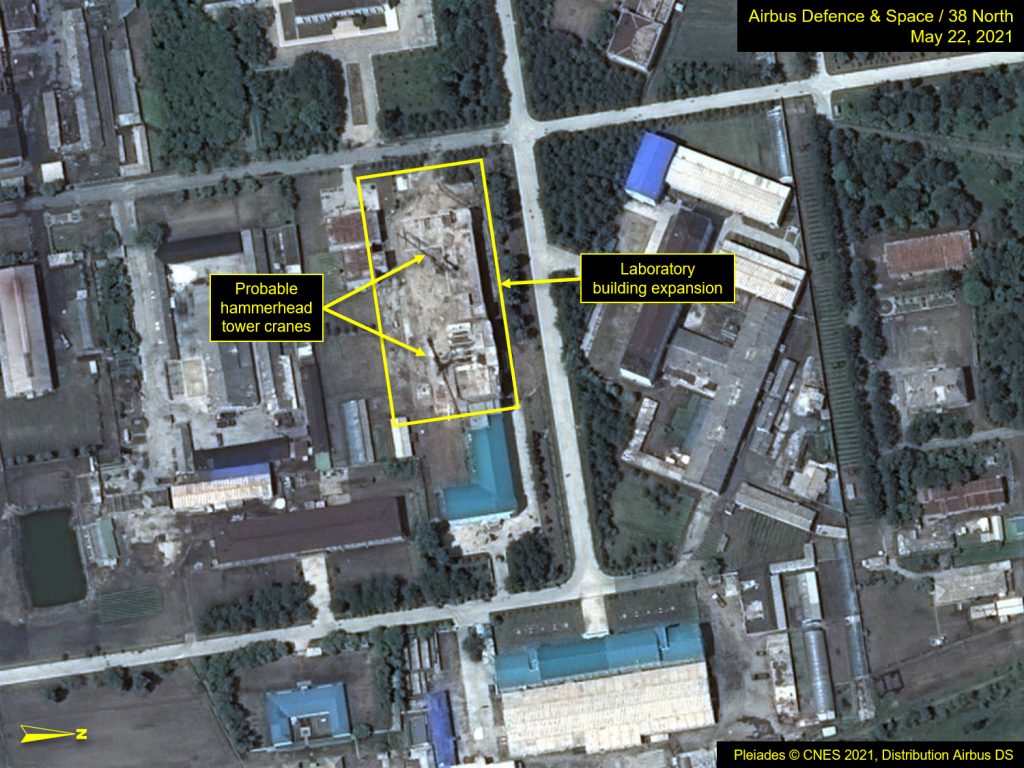North Korea’s Yongbyon Nuclear Scientific Research Center: Satellite Update
New commercial satellite imagery of North Korea’s Yongbyon Nuclear Scientific Research Center indicates: 1) continued activity at the Radiochemical Laboratory (RCL) and the Thermal (Steam) Plant which supports it, but no clear evidence that spent fuel rods have been transferred from storage near the 5 MWe Reactor to produce plutonium; 2) new activity at the Experimental Light Water Reactor (ELWR) that is probably related to maintenance/repair; 3) minor observable activity at the Uranium Enrichment Plant (UEP); 4) continued water management efforts along the Kuryong River; and 5) continued construction of a new wing of a large laboratory building in the Main Research and Administrative Headquarters Area.
Radiochemical Laboratory
The coal-fired Thermal Plant, which supplies steam to the RCL, has remained in continuous operation since early March, although the smoke plume is somewhat diminished on the most recent satellite imagery. While steam is necessary to dissolve spent fuel, extract plutonium, recover uranium and treat radioactive waste, there is no definitive evidence that spent fuel has been transferred from the storage facility next to the 5 MWe Reactor. Steam production, as well as detected thermal infrared emanations, are alone insufficient to definitively determine whether a new reprocessing campaign is underway or whether the activity is simply related to the processing of radioactive waste from previous campaigns.
Figure 1. Coal-fired Thermal Plant has remained in continuous operation.
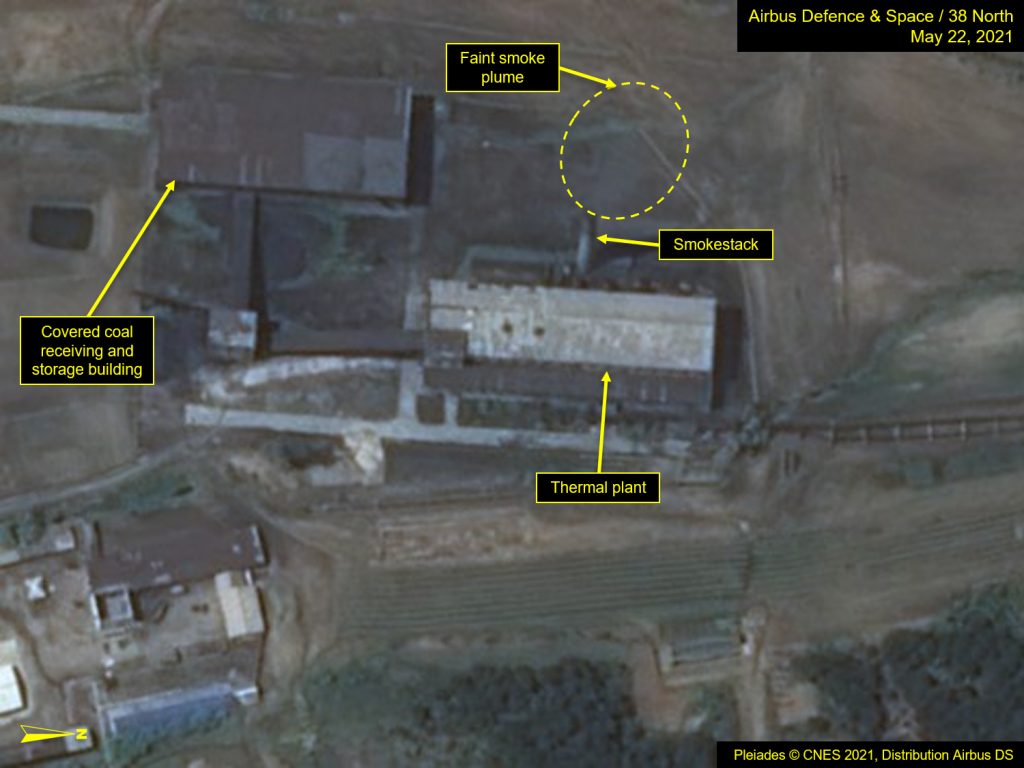
The ELWR
Imagery from May 22 indicates that the peaked roof covering for the exterior gantry lift tower was on the ground next to the tower structure. While the purpose of its removal cannot be certain, it was likely done to gain access to the motorized winch, which raises fuel containers and heavy reactor equipment to the entry port on the north side of the containment building. This enables fresh and spent fuel container transfers into and from the reactor building through a special airlock during refueling or maintenance operations.
Construction on the gantry tower began in 2012 and was completed by March 2013. The roof covering was added sometime after mid-November 2015, probably to protect the motorized winch and supporting rails from the weather. As no fueling has been observed since the completion of the reactor building, the motorized winch has probably been idle since its installation and maintenance may be necessary to ensure its operational readiness. Imagery of the gantry tower framework suggests the unit has been removed from the site to a nearby maintenance facility for a major overhaul.
Figure 2. Roof removed over gantry tower at the ELWR.
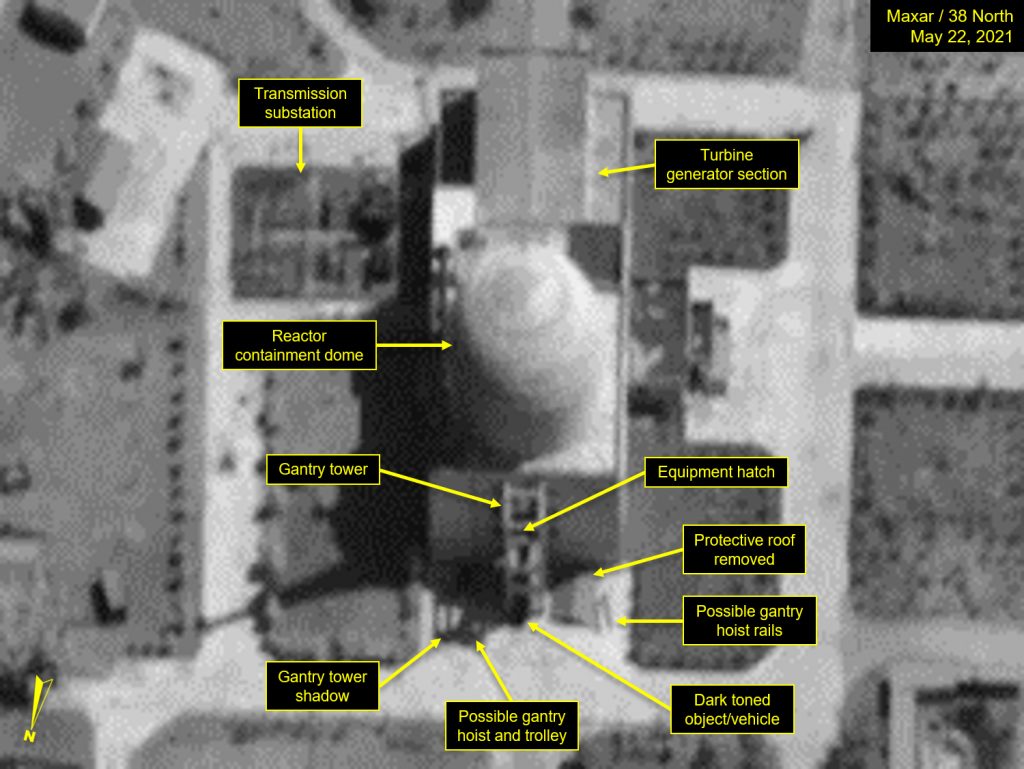
Figure 3. ELWR render illustrates gantry tower and equipment hatch with roof.
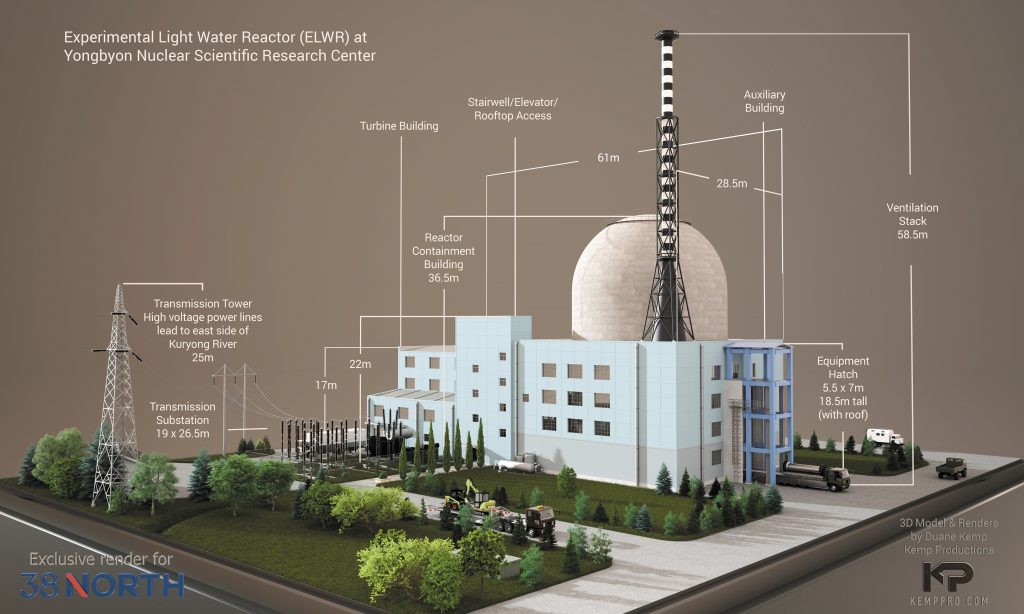
The UEP
Activity at the Uranium Enrichment Plant has been minimal. No discernible changes have occurred to the cooling units located next to the cascade hall, but on two occasions, a tanker trailer has been parked at the far west end of the hall.
The periodic arrival of three specialized railcars to the UEP transfer station is another not-fully-understood event. On May 22, they reappeared at the city rail yard but had not yet reached the transfer terminal that supports the UEP. Their pattern of past transit suggests that they will arrive at the UEP within a few days and will remain for approximately 10 days while an exchange in the cars’ content will occur. It is unknown whether they are delivering product or taking spent product away. These cars have been appearing three to four times a year and were last observed on January 19, 2021.
Figure 4. Specialized railcars observed at Yongbyon City rail yard.
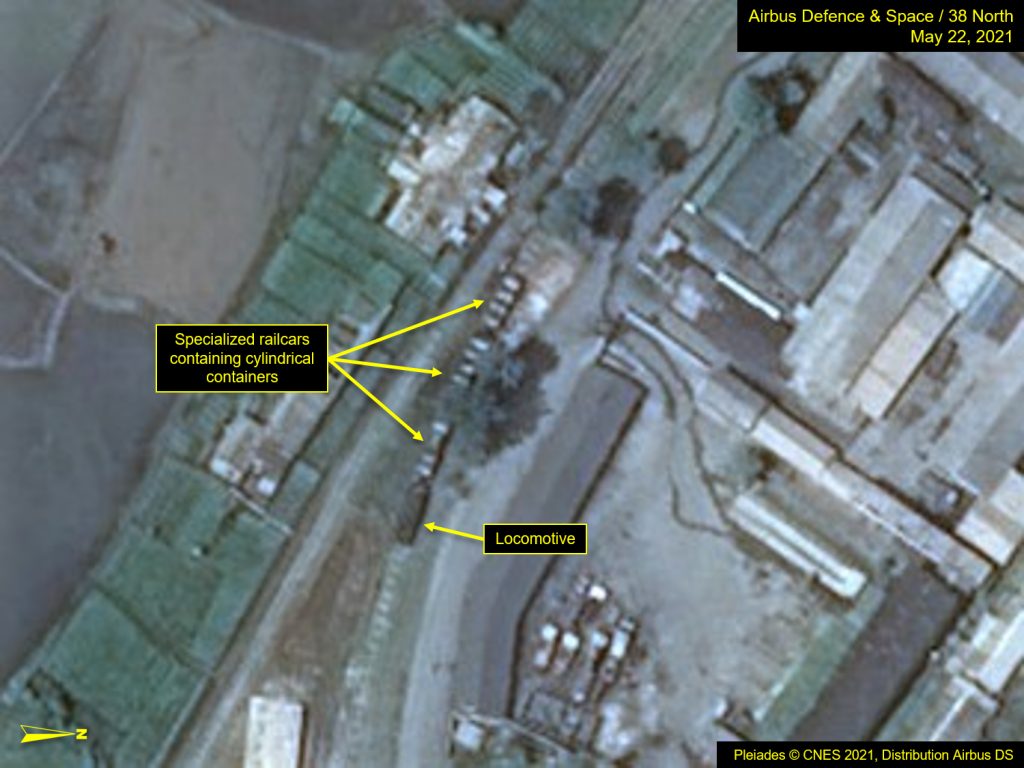
Other Activity
Vapor emissions from the UO2 Production Process Building of the old Fuel Rod Fabrication Plant on imagery from April 9 indicate that the plant remains operational.
Channeling in the Kuryong River continues, as does work on the overflow dam located adjacent to the reactor area. The dam serves to provide a constant source of water for the ELWR and the 5 MWe Reactor. Earthen fill is being added along the dam’s length to repair damage from the previous year’s storms.
At the Main Research and Administrative Headquarters Area, the addition of a new wing to one of the larger laboratory buildings is proceeding. The gradual addition of new buildings or the expansion of others demonstrates the DPRK’s determination to continue their research and improve their capabilities at the Yongbyon complex.
Figure 5. Vapor emissions from the UO2 Production Process Building.
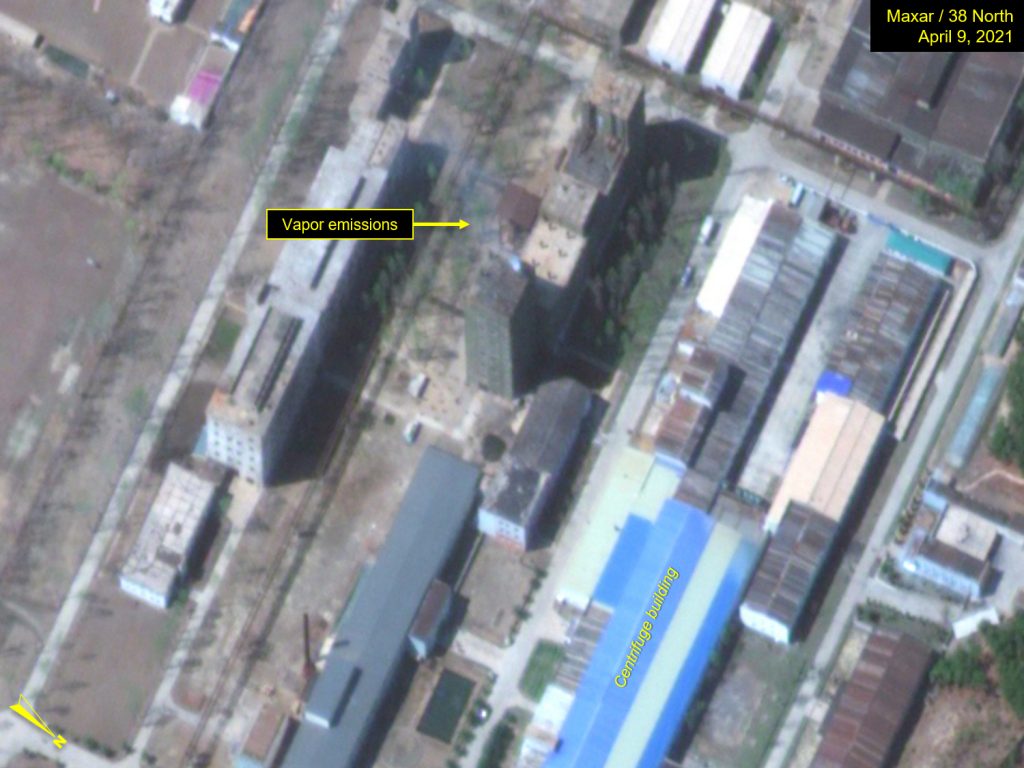
Figure 6. Channeling in the Kuryong River and work on the dam continue.
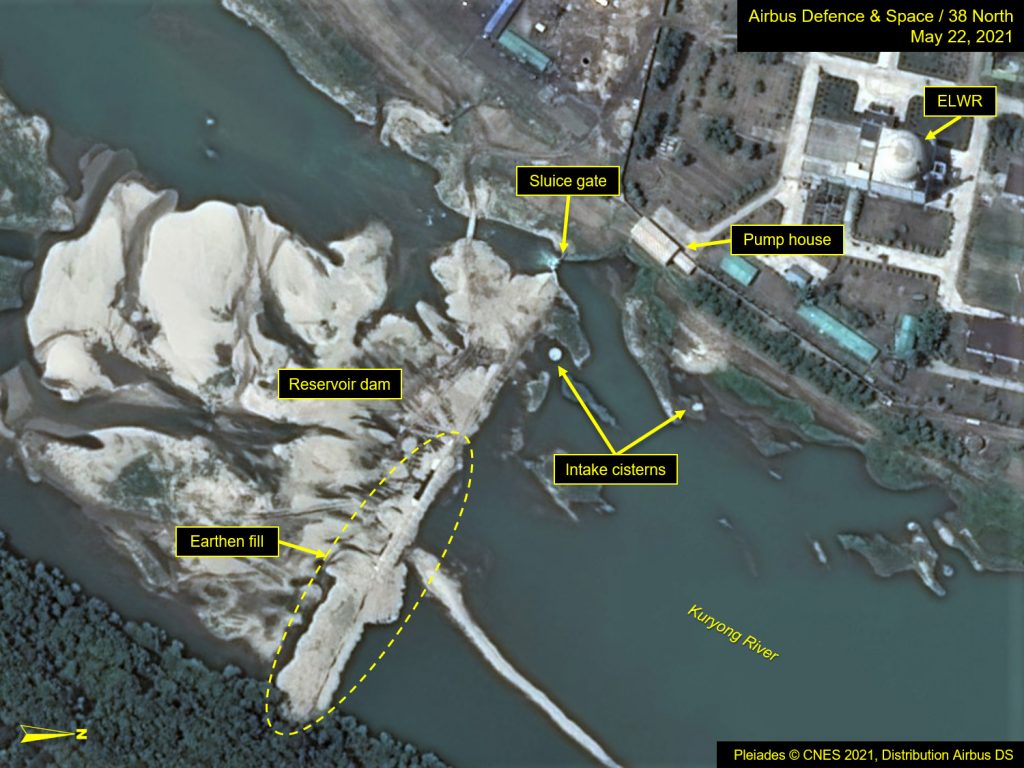
Figure 7. Continued construction of building at Main Research and Administrative Headquarters.
